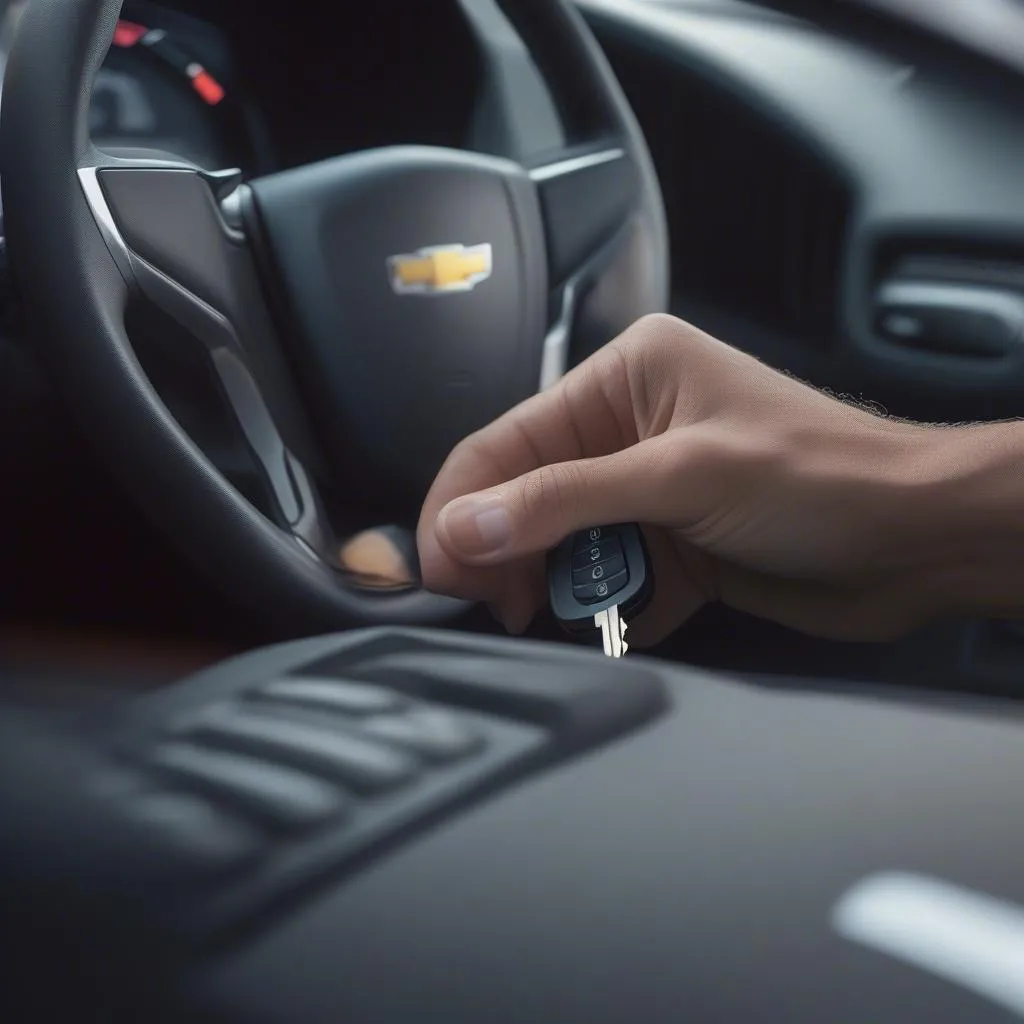The passenger seat belt warning is a crucial safety feature in modern vehicles, designed to ensure all occupants are properly restrained. However, sometimes this system can malfunction or trigger unexpectedly, causing frustration and concern. This comprehensive guide will explore the common causes of passenger seat belt warnings, offer practical troubleshooting steps, and provide insights into solutions ranging from simple DIY fixes to more advanced diagnostic approaches.
Similar to the kia sorento passenger seat belt warning, many vehicles utilize similar systems. Let’s delve into the intricacies of this important safety system.
Why is My Passenger Seat Belt Warning Light On?
The most obvious reason for the passenger seat belt warning light illuminating is an unbuckled seat belt. However, even if the seat belt is fastened, the warning light can persist due to several factors. These can include faulty seat belt buckle sensors, wiring issues, or problems with the seat occupancy sensor, especially common in vehicles equipped with weight-based passenger detection. Software glitches or control module malfunctions within the vehicle’s computer system can also contribute to the issue.
Common Causes of Passenger Seat Belt Warning Issues
- Faulty Seat Belt Buckle: The buckle mechanism itself can wear down over time, leading to poor connection and triggering the warning light even when the belt is fastened.
- Damaged Wiring: Wiring harnesses under the seat can become frayed or disconnected due to regular wear and tear, or even spilled liquids.
- Seat Occupancy Sensor Malfunction: This sensor, often located within the passenger seat cushion, detects the presence of a passenger. If malfunctioning, it can signal the system that a passenger is present even when the seat is empty, leading to a persistent warning.
- Software or Module Problems: Glitches in the vehicle’s software or issues with the seat belt control module can cause erratic behavior, including false warning activations.
Troubleshooting Passenger Seat Belt Warning Lights
Before rushing to a mechanic, there are several DIY steps you can take to troubleshoot the issue. These range from simple checks to slightly more involved procedures.
- Check the Obvious: Ensure the seat belt is fully clicked into the buckle. Sometimes, even a slight misalignment can prevent proper engagement and trigger the warning.
- Inspect the Buckle: Visually inspect the buckle for any signs of damage, debris, or foreign objects lodged inside. Try cleaning the buckle with compressed air or a small brush.
- Check the Wiring (with caution): If you are comfortable working with car electronics, carefully inspect the wiring underneath the passenger seat for any visible damage, loose connections, or exposed wires. Disconnect the battery’s negative terminal before touching any wiring.
- Reset the System: Sometimes, a simple system reset can resolve software glitches. This usually involves disconnecting the battery’s negative terminal for a few minutes and then reconnecting it.
This issue can also affect other vehicle models, similar to the tacoma passenger seat belt warning. Let’s look at some more advanced solutions.
Advanced Diagnostic and Repair Options
If the basic troubleshooting steps don’t resolve the issue, you might need more specialized diagnostic tools and expertise.
Diagnostic Scanners: Uncovering the Root Cause
Using a diagnostic scanner allows you to read the error codes stored in the vehicle’s computer system. These codes pinpoint the specific area of the system causing the problem, enabling a more targeted repair.
Software Updates and Reprogramming
Sometimes, the problem stems from outdated or corrupted software within the seat belt control module. Reprogramming the module with the latest software version can often resolve these issues. This procedure typically requires specialized equipment and software accessible to professional technicians.
Professional Repair: When to Seek Expert Help
If you are uncomfortable working with car electronics or the issue persists despite your troubleshooting efforts, it’s best to consult a qualified automotive technician. They have the expertise and tools to diagnose and repair complex electrical problems effectively. This can include issues such as replacing faulty sensors, repairing wiring harnesses, or addressing control module malfunctions.
As an example, the 2016 toyota sienna passenger seat belt warning chime can sometimes be related to software issues. Addressing these issues properly can ensure the safety system functions correctly.
Conclusion
The passenger seat belt warning is a vital safety component. Understanding its operation and knowing how to troubleshoot common problems can save you time, money, and potentially prevent accidents. While simple fixes can often resolve the issue, don’t hesitate to seek professional help if the problem persists. Regular maintenance and prompt attention to warning lights are essential for maintaining the safety and reliability of your vehicle. This is true even for older vehicles, similar to the saab passenger seat belt warning. Addressing these warnings promptly is crucial for your safety.
Even seemingly simple warnings should be addressed, similar to the air bag passenger seat belt warning. A functioning seat belt system is crucial for passenger safety.

